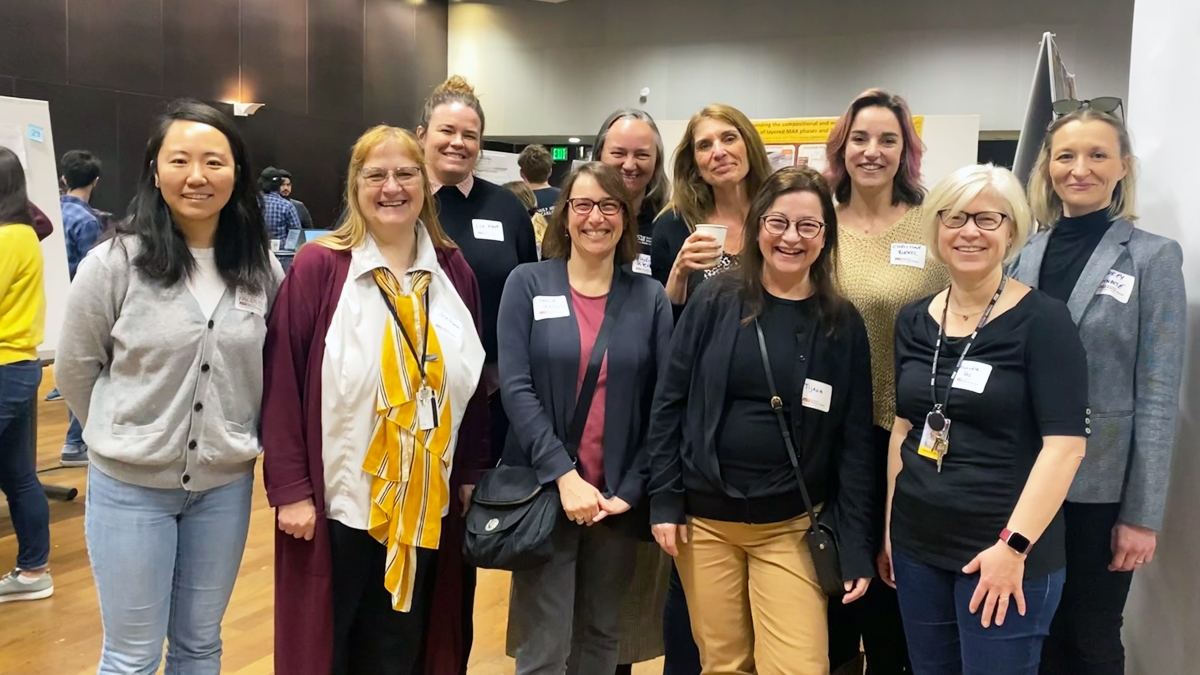From 2 women in department to 35% of faculty: School of Molecular Sciences celebrates growth, impact

Women make up 35% of the School of Molecular Sciences' faculty. Photo courtesy School of Molecular Sciences/ASU
Regents Professor Ana Moore is the longest continuously serving female faculty member of Arizona State University's School of Molecular Sciences, starting in 1976.
Although initially hired as a teaching intern, Moore’s research capabilities in artificial photosynthesis were quickly recognized, and together with colleagues Devens Gust and Tom Moore, she went on to lead a team of student and postdoctoral associates that developed an international reputation in the design and construction of bio-inspired molecular systems for energy conversion and storage.
“When I came to ASU, I certainly was not the first woman in the department,” Moore recalled. “Alex Navrotsky was here before me until 1985. However, there were times I was the only woman with tenure. I didn’t notice though because that’s how it was at the time. And ASU was ahead of the curve, because there were many universities who didn’t have any female faculty.”
In the ensuing years, more female researchers were hired. Under department chair Devens Gust, Petra Fromme, Giovanna Ghirlanda and Rebekka Wachter joined the faculty. Just a few years later, Marcia Levitus and Anne Jones were hired, adding to the strength and diversity of the department.
Diversity has continued to increase since then.
“Over the last few years, the School of Molecular Sciences has hired 12 women faculty members, compared to four men," Ian Gould, associate dean of online and digital initiatives and former interim director of the School of Molecular Sciences, said. "The school currently has three women Regents Professors out of a total of six, and the current administration team consists of four women and one man.”
The school's faculty is now 35% women.
Female faculty are leading major initiatives at ASU. Navrotsky’s project FORCE and MoTU have received widespread recognition, while Fromme and Ros were part of the team that was recently awarded a $90.8 million grant from the NSF to build a free electron laser.
Jones is vice provost for undergraduate programs and Ara Austin leads the online undergraduate research (OURS) program.
Research from the school's female junior faculty is also receiving recognition: Audrey Lapinaite recently received an National Institutes of Health Innovation Award, and Christina Birkel received an National Science Foundation CAREER Award.
“I am very proud of all of the women in the School of Molecular Sciences," Director Tijana Rajh said. "They are making history here and around the world with their research, innovation and creativity. ASU’s commitment to diversity and inclusion is one of its strengths that brought me here.”
Moore noted that having a diverse and strong research group makes the school more competitive.
“We need to be intentional about who we hire today, and how we support them impacts the educational and research opportunities we provide for our students, because our students become the researchers of tomorrow,” Moore said.
Check out this video featuring ASU's women in molecular science:
More Science and technology

Applying AI to microelectronics manufacturing
Rivers flow across the planet’s surface, carving deep valleys and intricate canyons. Likewise, makers of microelectronics direct…

Applied Materials invests in ASU to advance technology for a brighter future
For nearly 60 years, global giant Applied Materials has been hard at work engineering technology that continues to change how…

Meet ASU engineering students who are improving health care, computing and more
Furthering knowledge of water resource management, increasing the efficiency of manufacturing point-of-care health diagnostic…

